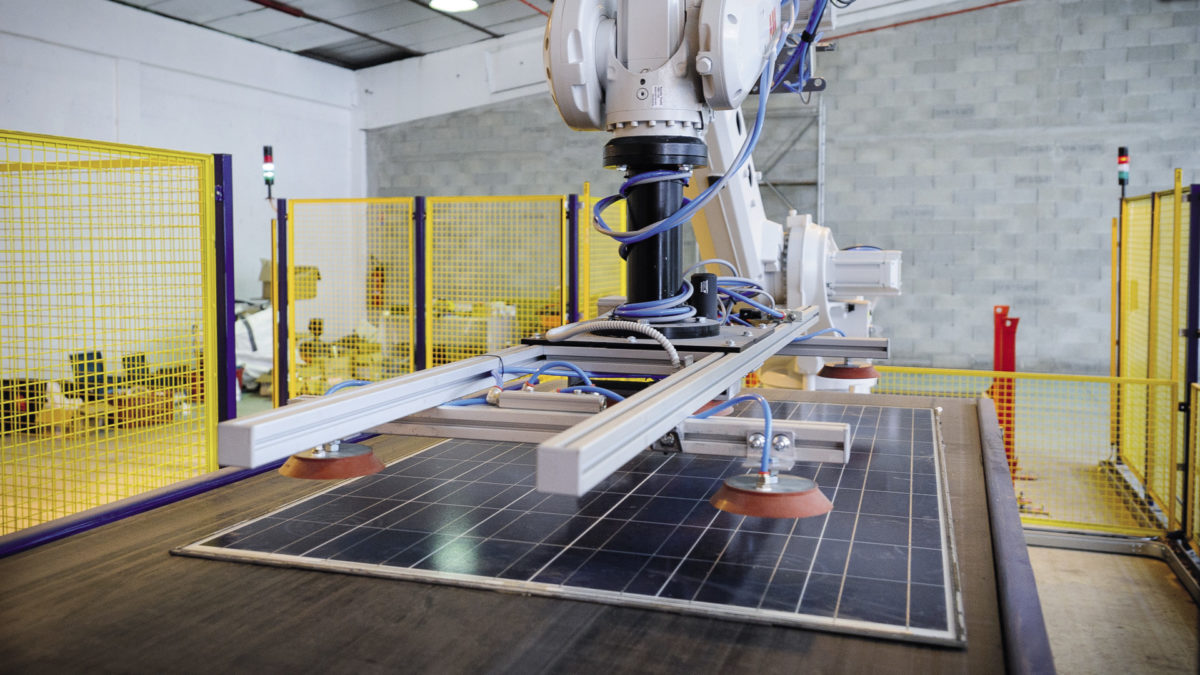As the solar industry comes of age, dealing with the growing volume of products reaching end of life is already a research priority at universities and institutes the world over. Many different approaches are on trial, though experts are waiting until later this decade when the volume of products is expected to grow significantly, giving them room to experiment with processes at large scale.
Processing and purifying silicon from end-of-life cells back to a state where it can again be inserted back into the PV supply chain to make new cells has proven a major challenge here. It requires high levels of energy and a complex understanding of tiny impurities left in the recycled silicon that differ from brand new material.
Some already say that diverting this silicon to applications with lower purity requirements is the best solution. However, a group of scientists led by the Key Laboratory of Urban Pollutant Conversion at the Chinese Academy of Sciences may have come up with an alternative – one that cuts out the energy-intensive ingot production stage entirely.
“Skipping the process of Si ingot production and wafer cutting can save approximately 40% of the cost of PV module production,” the group explained in its research. “Nonetheless, there is still a major challenge for the current technologies: regenerated solar cells from recovered Si wafers tend to exhibit a decreased conversion efficiency, which is not acceptable for the current competitive PV market.”
Recovery and upgrade
Popular content
With this in mind, the group sought ways to recover silicon wafers suitable for production of high efficiency cells and modules. They demonstrated a series of chemical treatments that are shown to both purify wafers and improve their surface characteristics, making them suitable for use in new, high-efficiency cells. The process is described in full in “A systematically integrated recycling and upgrading technology for waste crystalline silicon photovoltaic module,” which was recently published in Resources, Conservation and Recycling.
The group took advantage of a process previously used by wafer manufacturers to reduce surface reflectivity and produce “black silicon” wafers.
“Through this technology, desirable and highly pure Si wafers with intact structure, minimally reduced thickness and excellent light-trapping ability are successfully obtained,” the group explained. “The properties of the reclaimed Si wafers are characterized and evaluated for new solar cell manufacturing and packaging, which encourages regenerated solar cells with higher power conversion efficiency than that of new commercial solar cells.”
This content is protected by copyright and may not be reused. If you want to cooperate with us and would like to reuse some of our content, please contact: editors@pv-magazine.com.



5 comments
By submitting this form you agree to pv magazine using your data for the purposes of publishing your comment.
Your personal data will only be disclosed or otherwise transmitted to third parties for the purposes of spam filtering or if this is necessary for technical maintenance of the website. Any other transfer to third parties will not take place unless this is justified on the basis of applicable data protection regulations or if pv magazine is legally obliged to do so.
You may revoke this consent at any time with effect for the future, in which case your personal data will be deleted immediately. Otherwise, your data will be deleted if pv magazine has processed your request or the purpose of data storage is fulfilled.
Further information on data privacy can be found in our Data Protection Policy.